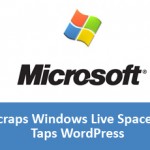 San Francisco — AOL Inc. chief executive Tim Armstrong on Tuesday confirmed that his company has scooped up the technology blog TechCrunch Inc., one of the most influential blogs in Silicon Valley, for an undisclosed sum, adding it to their arsenal of content sites that range from the gadget blog Engadget to local news site Patch.com, as the Internet giant looks to expand its offerings of critical content to its audience.
San Francisco — AOL Inc. chief executive Tim Armstrong on Tuesday confirmed that his company has scooped up the technology blog TechCrunch Inc., one of the most influential blogs in Silicon Valley, for an undisclosed sum, adding it to their arsenal of content sites that range from the gadget blog Engadget to local news site Patch.com, as the Internet giant looks to expand its offerings of critical content to its audience.
The signing of the contract took place on stage here in San Francisco with TechCrunch founder and editor-in-chief Michael Arrington at TechCrunch’s Disrupt conference, handing over the contract to AOL chief executive Tim Armstrong to add his signature. In fact, they signed the contract on-stage.

Photo: TechCrunch founder Michael Arrington speaking Monday from the Disrupt conference in San Francisco, a day before AOL purchased his blog network. Credit: Wired.com/Jim Merithew
The pair said they were spurred to reveal the acquisition earlier than planned after a scoop by GigaOm, a rival blog, yesterday that the deal was about to close. Arrington said, although he said he had a “funny feeling” that he would stay on at AOL for three years.
“TechCrunch and its team will be an outstanding addition to the high-quality content on the AOL Technology Network, which is now a must-buy for advertisers seeking to associate their brands with leading technology content and its audience,” said Armstrong in a press release reprinted on the TechCrunch site.
However, the companies did not reveal the terms of the deals, but a person familiar with the matter said AOL paid about $30 million for TechCrunch. But according to CNBC reports, the deal is valued at about $40 million.
Rumors of the deal were swirling around since Monday by Om Malik, news that disrupted TechCrunch’s Disrupt conference — being held this week in San Francisco to highlight Silicon Valley startups. The news of the acquisition was announced from the stage Tuesday morning.
Armstrong said he first discussed with Arrington about an acquisition in May, at the TechCrunch Disrupt Conference in New York. His main demand: That Arrington, who has been such a major player of the site’s identity and popularity, stay on board for at least three years.
Under Armstrong, a former top sales executive at Google, AOL has mainly concentrated on its Web content properties such as AOL News, Moviefone, and Fanhouse as it continues to shed its former identity as an Internet service provider.
Founded in 2005, the relentless work of its founder Michael Arrington, TechCrunch has grown in five years from one guy with a laptop to a network of sites and conferences. TechCrunch and its network of websites now caters to more than 10 million unique visitors and draw more than 33 million page views per month. It operates a global network of dedicated properties from Europe to Japan, as well as specialized industry websites including MobileCrunch, CrunchGear, TechCrunchIT, GreenTech, TechCrunchTV and CrunchBase.
“Michael and his colleagues have made the TechCrunch network a byword for breaking tech news and insight into the innovative world of start-ups, and their reputation for top-class journalism precisely matches AOL’s commitment to delivering the expert content critical to this audience,” said Armstrong.
Asked how the TechCrunch properties might coexist with competing AOL-owned sites like Engadget, Armstrong said: “I would expect these brands to operate independently but leverage each other.” Besides its flagship TechCrunch site, TechCrunch has a smaller, gadget-focused site, CrunchGear.
For its part, AOL has recently appointed hundreds of writers to create more original news and local and entertainment content while it firmly restructures its mix of assets during sharp declines in revenue and profits.
This acquisitions demonstrates that AOL, spun off from media giant Time Warner Inc., is amplifying its effort on ad-supported Web media content, a business that has largely been a disappointment for the traditional media industry, which is shifting toward online subscription models as a way to generate revenue from digital businesses.
Shares rose 0.5% to $24.27 in after-hours trading.


